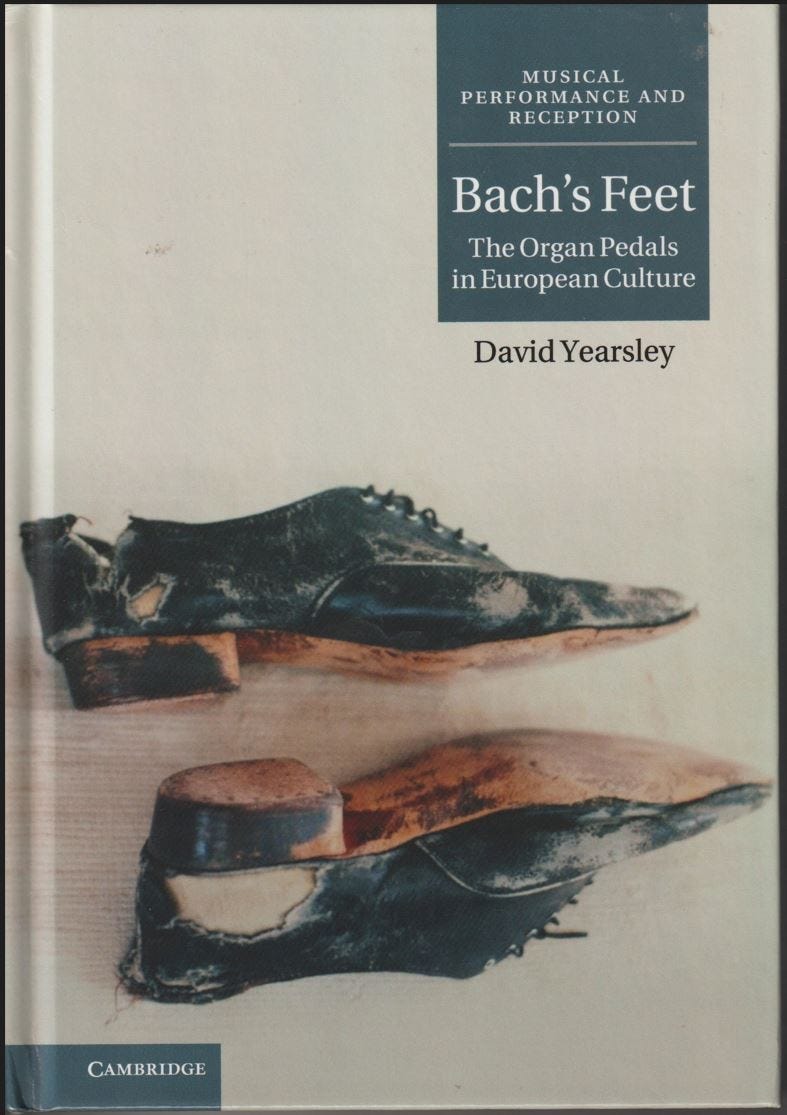The size of Bach's feet - are yours too large?
Browsing through The Times today my attention was caught by an article sourced from the German newspaper Süddeutsche Zietung concerning some research that had been carried out into the extent to which Bach’s feet were an ideal size for an organist. The size quoted was size seven-and-a-half shoes, which on the surface helps to explain some issues I have with my pedal technique. As it happens a book entitled Bach’s Feet - The Organ Pedals in European Culture was written by David Yearsley and was published by Cambridge University Press in 2012. The final chapter is devoted to Bach’s footwear but with no mention of the shoe size.
There is so much mis-information in the article that it is difficult to know where to start. The researchers did not have access to Bach’s skeleton in the Thomaskirche in Leipzig but relied on photographs taken in 1894 when the coffin was exhumed and reburied. However, there is some doubt about whether in fact the body was that of J.S.Bach. Not a good start.
Defining shoe sizes is not easy, as the European, UK and USA size definitions all vary slightly, though all are based on the size of the last. However, the width of the footprint depends on the width of the welt, which is a strip of leather that goes between the upper and the outsole. The shoe may be nominally a size 7 (chose your country) but that does not define the width of the sole, nor of course the height of the heel, both of which have an impact on the way in which the pedal keyboard is played. (Of course, if you play in socks you have a different perspective on shoes!).
A factor not discussed in The Times account of the research is the width and spacing of the pedals, both the ‘white’ and ‘black’ notes. Yearsley’s book, which runs to almost 300 pages, offers a fascinating insight into the development of the pedal keyboard, including the reluctance of English organists and organ builders to take advantage of the way in which pedal keyboards had developed in Germany in particular. The pace of English usage only picked up after Mendelssohn arrived to give recitals of Bach’s music and found few organs that he could use to do so.
The final chapter of the book does discuss the shoes and other accessories that Bach might have used, but points out that there is little documentary evidence on the subject. Yearsley does point out that an organist would have used the shoes they walked to church in, and these would have been stout walking shoes. Mendelssohn complained in 1837 that the pedal keys of the Birmingham Town Hall organ were too narrow for boots. The use of specialist organ shoes is a fairly recent development.
If you wish to read the research paper in German it was published in Archiv für Kriminologie.
This is the last post for 2023. The column will resume on 3 January, by which time I should have sorted out all the pedal passages in the A minor Prelude and Fugue BWV543 despite wearing my size 10 shoes.




